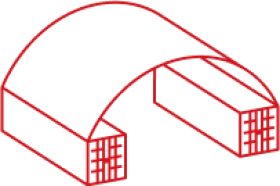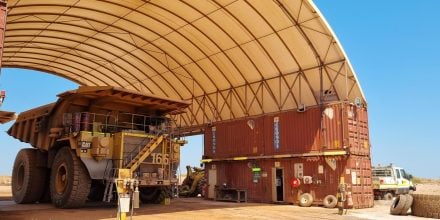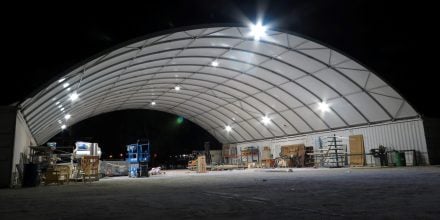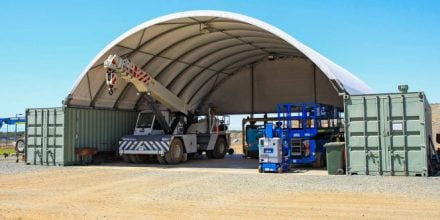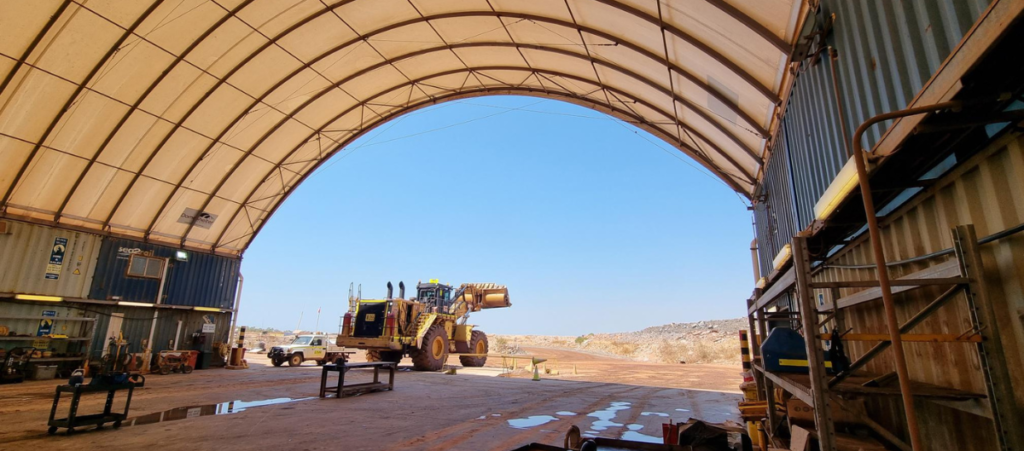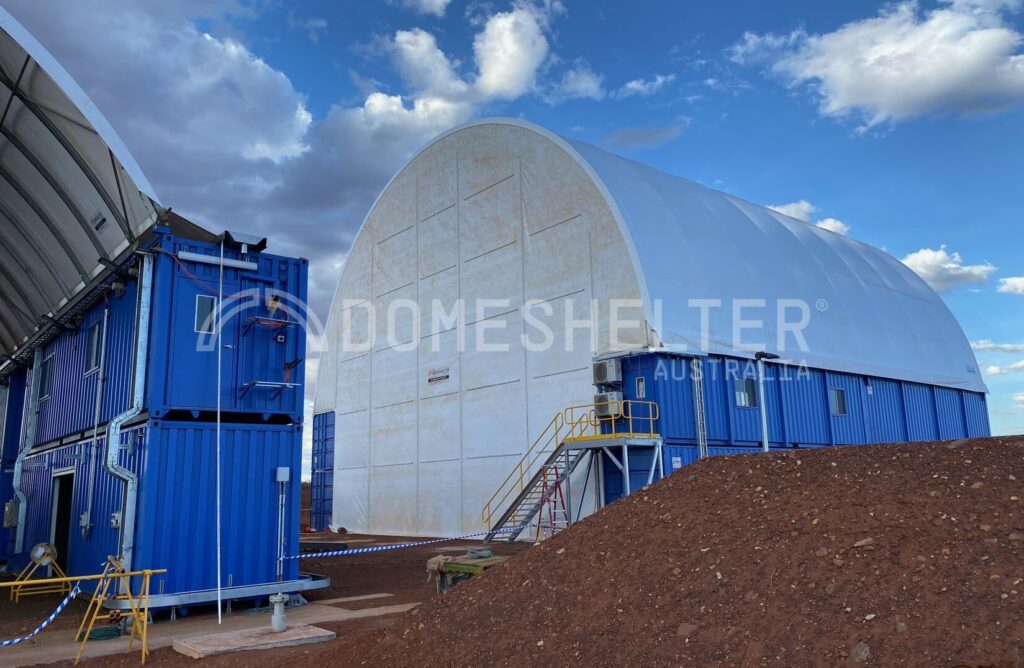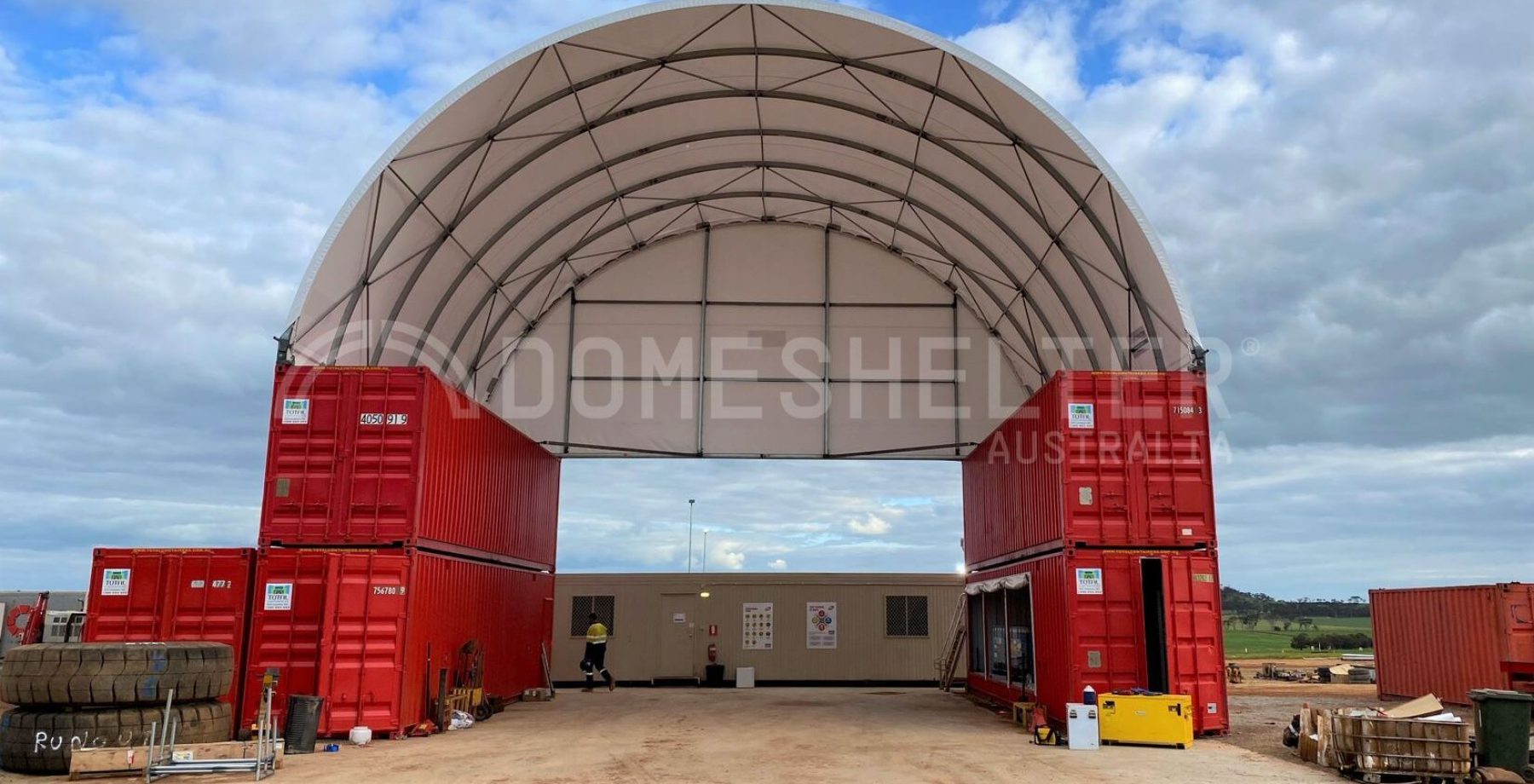
Industrial Fabric Shelters are a popular and versatile choice for a variety of uses and can be engineered to suit even the harshest weather conditions. However, when it comes to high wind conditions, there is often confusion about whether the Fabric Shelter Tarp should be removed.
In this article, we will explore the safety concerns and best practices when it comes to Fabric Shelter Tarps and high wind conditions. Understanding the risks and best practices around Fabric Shelter Tarps in high wind is important for ensuring the safety of people and property.
DomeShelter Australia’s Care and Maintenance Guide
We are committed to a culture of ongoing care at DomeShelter Australia, assisting every client not just with their initial purchase but for the lifetime of their Shelter.
A care and maintenance guide is provided with every DomeShelter™ purchase, outlining what steps are required to ensure each customer gets the most out of their product.
One clause in the contract that clients often request further clarification on is whether it is necessary to remove the Shelter Tarp in the event of a cyclone.
Should I Remove My Fabric Shelter Tarp in a Cyclone?
If your Shelter is designed for cyclonic conditions, the Structure itself is engineered to withstand cyclonic winds with the Tarp remaining on.
Removing the Shelter’s main roof Tarp in the event of a cyclonic warning can be considered depending on the condition/age of the Tarp, the perceived risk to yourself and your assets, or if you are aware the Structure is not rated cyclonic, and therefore is at risk of collapse.
Due to the cost and the risks involved with removing and reinstalling each time there is a cyclone threat, some clients have chosen to view the Tarp covers as dispensable and leave them on. Providing correct tension and maintenance of the Tarp and the tensioning detail is maintained, most covers weather cyclone events well and remain undamaged.
Whether to remove the Tarp cover or not is ultimately a decision that has to be made by the client. If you are unaware of the design criteria of your Shelter, you can send specific details and pictures of your shelter to our team and we will happily try to help identify what wind region the Shelter may have been engineered for.
Should I Remove my Endwalls in a Cyclone?
It must be noted that most Endwalls will not be rated for cyclonic winds, requiring the Endwall Tarps to be removed to ensure the main structure is not jeopardised.
A generic clause in the item note of Shelter Endwalls reads “to keep in accordance with wind region engineering, endwall Tarps must be removed in the event of a high wind warning”. Clients will sometimes enquire about this clause, what exactly this process involves, and whether removing the Endwalls is necessary.
We advise that Endwall Tarps should be removed and stay off for the entire duration of any high wind warning, for client safety and to ensure the longevity of the Shelter.
Endwalls tend to act like a parachute, causing wind forces to apply additional pressure on the main Structure. When the Endwall Tarps are removed, though wind still exerts a force on the Structure, it can ‘tunnel through’ and exit out the other end.
The time it takes to remove and reinstall an Endwall is highly dependent on each individual Structure and details such as size, location, complexity of the Shelter etc. Our Project Care team can be consulted for situational advice based on clients’ specific needs if required.
Get in Touch
Our friendly & experienced team is always available to discuss client concerns and answer any questions about Fabric Structures. If you have any further questions about the removal of Shelter Tarps in high wind events, you can submit an enquiry using our contact page and a member of the team will get in touch directly.
